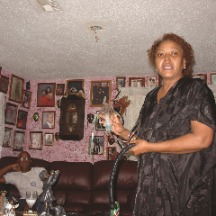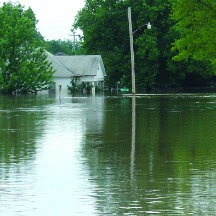In November 2020, Port Of Harlem will celebrate 25 years of publication. As we count down to our birthday, we will republish some of our most popular articles from our print issues. Thanks for subscribing and inviting others to join you in supporting our inclusive, diverse, pan-African publication - - now completely online. We originally published this article in the May-Jul 2008 print issue.
From birth through elementary school, my world was the eastside of Coffeyville, Kansas. It was an early 1960s Black world. A world that included Cousin Booker’s Barbershop and Variety store, and Aunt Vergie’s Ice Cream Stand. Except for breaking up fights and arresting wife-beaters, the four Black cops mainly left people alone. They even left Cripple Sam alone as he drove through the streets of Coffeyville delivering boot leg whisky in his 1956 Chevy with his crutch and Chihuahua not far from his side.
There were six Black churches on six street corners. And there was the pride of the community, Cleveland School, where Russell W. Cartwright, a Coffeyville native, was the principal. His well-known whipping paddle was named the “Board of Education” and parents seldom came to the school to complain about the teachers whipping “little Johnny.” I suspect that’s because those same Black teachers had once whipped “little Johnny’s” parents who, deep down, were still afraid of their former teachers.
Towering over that world was another neighborhood character, the Co-op oil refinery. It’s an erector set of towers and smoke stacks, spouting flames and smells over the community. Back then, folks only feared that the plant might blow up. The never feared its emissions would affect their health.
I returned to the Eastside recently and found that the refinery is still there, but most of my world is gone. Entire city blocks are barren except for the shell of a house here and a street sign or fireplug there.
Back Home with Sam Ford


What happened? Two things: residents stated suing the refinery for what it was doing to their health, homes and lives, and the refinery stated buying them out. Some, like my childhood friend, Pat Jennings, said “No.”
Jennings and her husband of 35 years, Henry, live on 2nd Street in the only house left on their block. They have fully paid for their place and say that the $40,000 the refinery offered them for their house and six lots is not enough for them to get a comparable place somewhere else without having to take out a mortgage. “I don’t want to get in a whole lot of debt no more,” said Pat. “I just have to stay here until I can do better,” she continued.
However, they worry about their health and that of their children, grandchildren, nieces, and nephews who stay with them. "We've brought up 15 of them in this house," said Pat, "fifteen kids and just about every last one of them has had a breathing problem. We almost lost some of them."
She said she keeps a breathing apparatus in the living room and bedroom. “I have to keep ‘em because the kids, okay, get choked up when they’re outdoors playing,” said Pat. She then recounted a time when the police came and told her kids to get into the house because ammonia had leaked at the refinery.
Despite the dangers and the changes, the Jennings continue to make decisions based on the same economic realities that many other Americans face. “Yes, I would leave,” reflected Henry. “If I went and found a home somewhere else, I want the same amount of space. If the refinery would buy it for a fair swap, I would do it,” he continued.
Jennings and her husband of 35 years, Henry, live on 2nd Street in the only house left on their block. They have fully paid for their place and say that the $40,000 the refinery offered them for their house and six lots is not enough for them to get a comparable place somewhere else without having to take out a mortgage. “I don’t want to get in a whole lot of debt no more,” said Pat. “I just have to stay here until I can do better,” she continued.
However, they worry about their health and that of their children, grandchildren, nieces, and nephews who stay with them. "We've brought up 15 of them in this house," said Pat, "fifteen kids and just about every last one of them has had a breathing problem. We almost lost some of them."
She said she keeps a breathing apparatus in the living room and bedroom. “I have to keep ‘em because the kids, okay, get choked up when they’re outdoors playing,” said Pat. She then recounted a time when the police came and told her kids to get into the house because ammonia had leaked at the refinery.
Despite the dangers and the changes, the Jennings continue to make decisions based on the same economic realities that many other Americans face. “Yes, I would leave,” reflected Henry. “If I went and found a home somewhere else, I want the same amount of space. If the refinery would buy it for a fair swap, I would do it,” he continued.
Advertisers | Contact Us | Events | Links | Media Kit | Our Company | Payments Pier
Press Room | Print Cover Stories Archives | Electronic Issues and Talk Radio Archives | Writer's Guidelines






